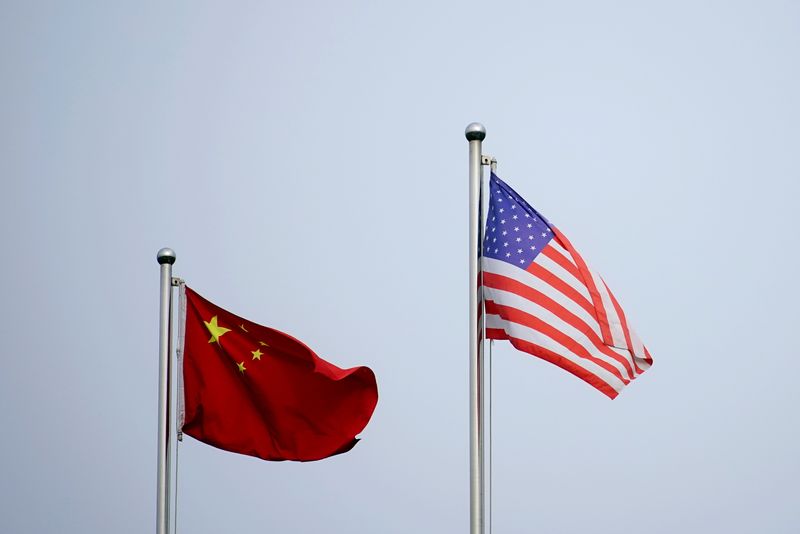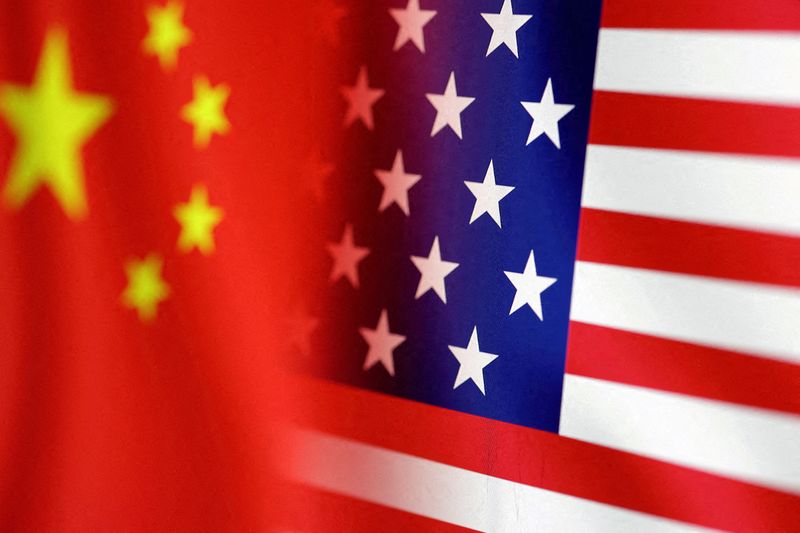By Valerie Volcovici, Timothy Gardner and Kate Abnett
BEIJING (Reuters) - As China and the United States meet this week in Beijing, the world's two biggest carbon polluters will be looking for ways to cooperate in both domestic policy and international trade in bringing down greenhouse gas emissions as they try to recalibrate ties amid disputes over trade and security.
Climate cooperation between the world's two biggest economies is considered essential for the world's efforts to keep global warming within 1.5 degrees Celsius above pre-industrial temperatures. Past agreements have also encouraged other countries to set bolder targets.
Here are some of the key areas up for debate this week:
CLIMATE FUNDING
Earlier this month, the U.S. and China began to discuss the issue of climate finance, which wealthier countries provide to poorer nations for the clean energy transition and climate adaptation, as an area of potential cooperation.
This arrangement, first agreed at U.N. climate talks in Rio de Janeiro in 1992, is based on the idea that rich countries have a greater responsibility to tackle climate change because they contributed the bulk of climate-warming emissions to the atmosphere since the industrial revolution.
China's rapid growth and increasing emissions, however, have led many - including the European Union - to argue that China should also be contributing aid. Earlier this month, U.S. Treasury Secretary Janet Yellen said contributions from Beijing could boost U.N. climate funds.
Beijing has rejected these calls, and refers to its classification as a "developing country" under the 1992 deal. It has resisted suggestions that those classifications be revisited, accusing the West of attempting to skirt its historical responsibility for climate change.
It has, however, signalled a willingness to offer climate finance to developing countries through different instruments, like a South-South Climate Cooperation fund it launched in 2015. That fund, however, has only delivered 10% of the $3.1 billion pledged, according to think tank E3G.
METHANE COOPERATION
Climate experts hope to see progress made on tackling methane - a powerful greenhouse gas emitted from energy, agriculture and waste that is responsible for roughly 30% of global warming.
The two agreed in the past to work on measuring methane emissions, and will likely look to expand that cooperation.
Technological advances in methane detection, including the deployment of satellites, offer a potential opening for the U.S. to collaborate with China. And the United States hopes that China will unveil its domestic plans to tackle the issue before the next U.N. climate conference in December.
SOLAR TARIFFS
U.S. tariffs on Chinese solar panels have been a sore spot since former President Donald Trump's administration imposed them in 2018, arguing that China's low-cost products were hurting domestic manufacturers.
They have been heightened after the passage of the Biden administration's Inflation Reduction Act, which aims to rapidly expand U.S. renewable energy and reshore clean energy manufacturing.
President Joe Biden has paused the tariffs temporarily, and vetoed an effort to repeal exemptions on them. But he has also blocked more than 1,000 shipments of panels from the Xinjiang region over concerns about slave labor.
Beijing says the tariffs are obstructing the global shift to clean energy and must be removed. It argues that if the United States wants to "ring-fence" climate from wider diplomatic disputes, then it should also refrain from unfairly politicizing China's solar-panel production, which is obstructing the global energy transition.
The complex issue is not expected to be tackled at the talks but may loom over discussions.
COAL
While U.S. Special Envoy on Climate Change John Kerry lauded China's rapid deployment of renewable energy in his opening remarks on Monday, he signalled that its continued build out of coal plants could undercut that progress.
China has pledged to start reducing coal consumption, but not until 2026, and new coal power project approvals have accelerated since last year.
China continues to justify its use of coal as an economic security issue. Meanwhile, the U.S. is the top oil and gas producer in the world and its fossil fuel exports have boomed.
BATTERIES
China's domination of the electric vehicle battery supply chain has been another awkward spot in relations as Kerry meets with his counterpart Xie Zhenhua and other senior government officials during his three-day visit to Beijing this week.
Chinese officials worry Washington could expand restrictions on battery imports, after the U.S. in May canceled a grant to Microvast Holdings when lawmakers expressed concerns over its alleged links to China's government.
Separate from the battery trade, Kerry and Xie could talk about ways the countries could share knowledge about battery technologies.
1.5 DEGREES
Under the 2015 Paris Agreement, countries agreed to work toward keeping global warming to "well below 2 degrees Celsius" - and ideally within 1.5 C - of pre-industrial temperatures. The U.N. climate summit six years later in Glasgow set 1.5C as the global goal. Global emissions levels have only risen since.
China still refers to the 2-degree language of the Paris deal, while the United States, European Union and many climate-vulnerable nations are focused on the 1.5C target. As the two countries look ahead to COP28 in Dubai, the lack of alignment of temperature goals is likely to be a point of contention, especially as countries are expected to strengthen their efforts to mitigate greenhouse gas emissions.

China, with its massive 1.4 billion population, also describes its emissions output in per-capita terms, which makes for a more favourable comparison with U.S. emissions for a population of 330 million.
The United States tends to look at overall national emissions, ignoring both historical emissions and the per-capita breakdown.
